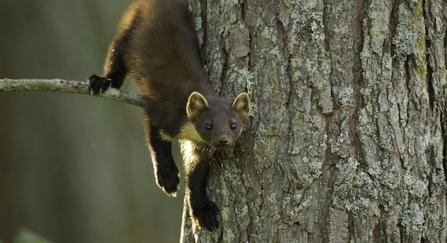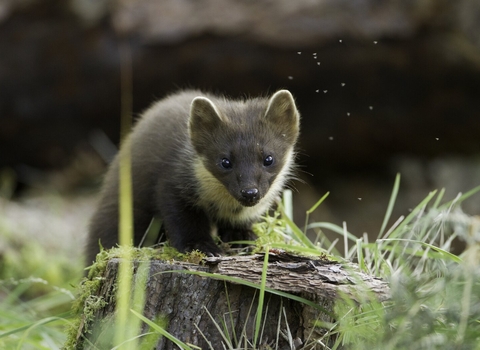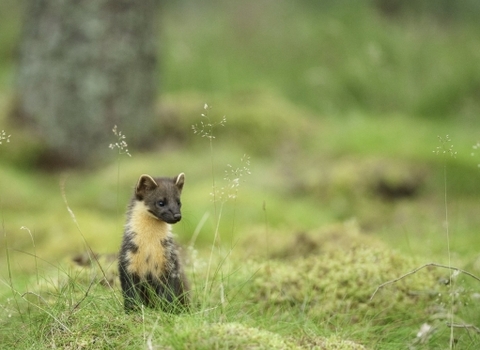Pine martens (martes martes) are elusive, mainly nocturnal and live in wooded areas. These traits combined make these mustelids very hard to spot. After a period of persecution and widespread woodland clearance, causing massive habitat loss, in the late 1800s pine martens were pushed to their very limits and confined to remote areas of northern England and Wales. Populations in northern Scotland fared better, but these were isolated.
Pine martens belong to the same family group (mustelids) as badgers, weasels and otters. They are omnivorous and will eat a variety of foods according to the season. A pine martens diet can include small mammals, eggs, insects, berries and carrion.
In recent years there has been a push to return these animals to their original range. There have been two high profile pine marten reintroduction projects in Wales and Gloucestershire as well as the discovery of a pine marten population living wild in Shropshire. The lack of large areas of connected woodland can hamper the spread of pine martens across the UK and so these reintroductions are crucial to allow pine martens to recolonise. Pine martens can travel long distances to find suitable habitat but these are usually lone individuals. Here in Staffordshire there has been the odd, sporadic record over the last 50 years.




